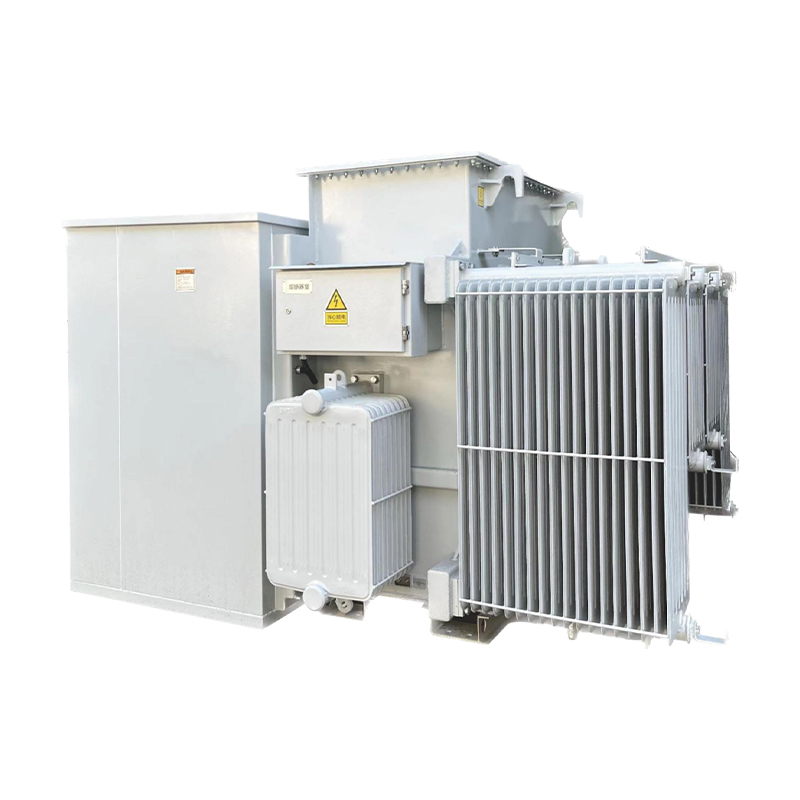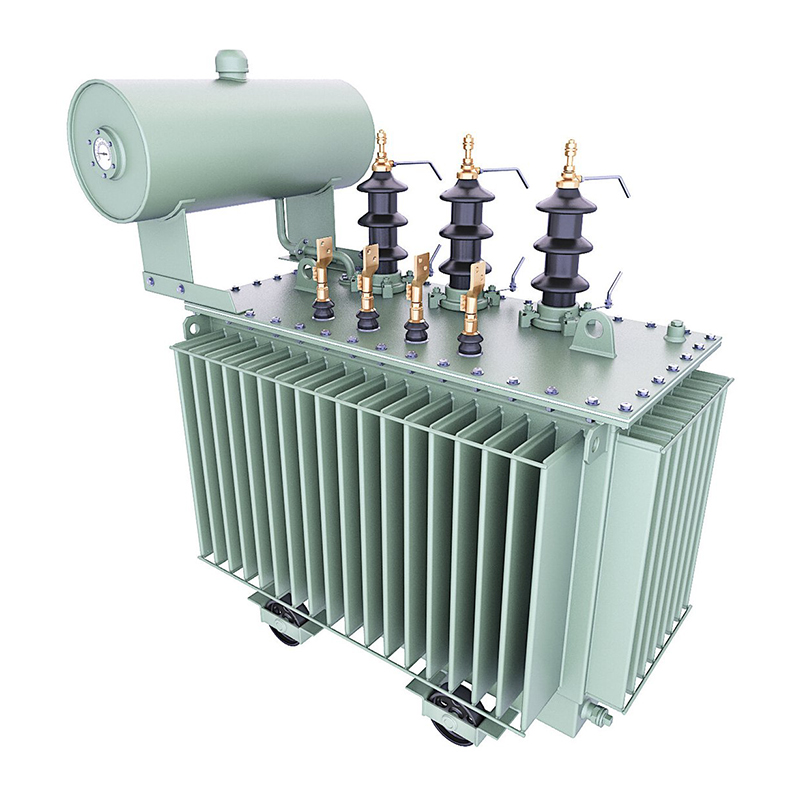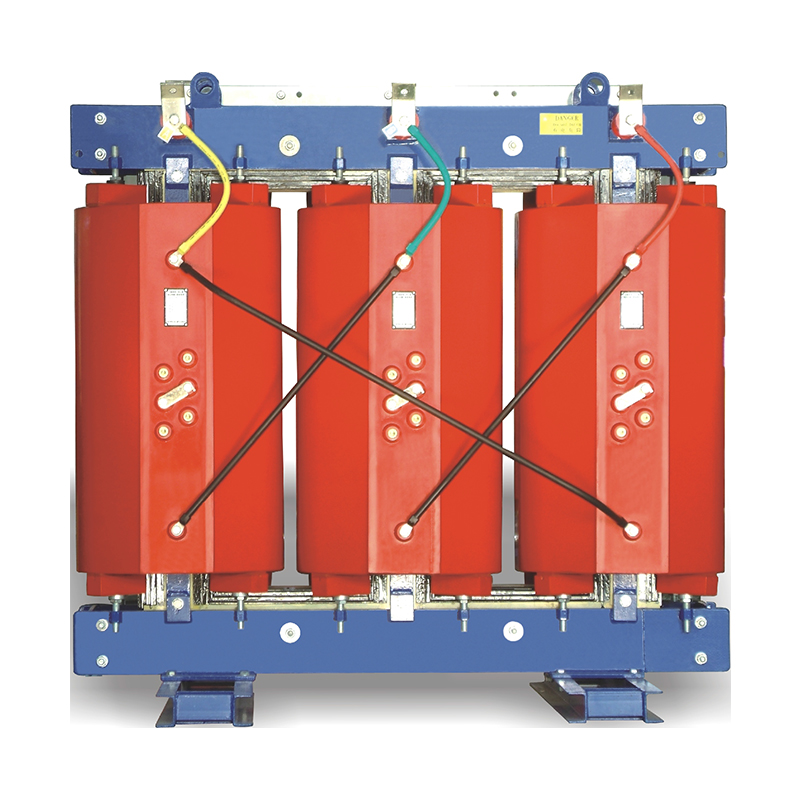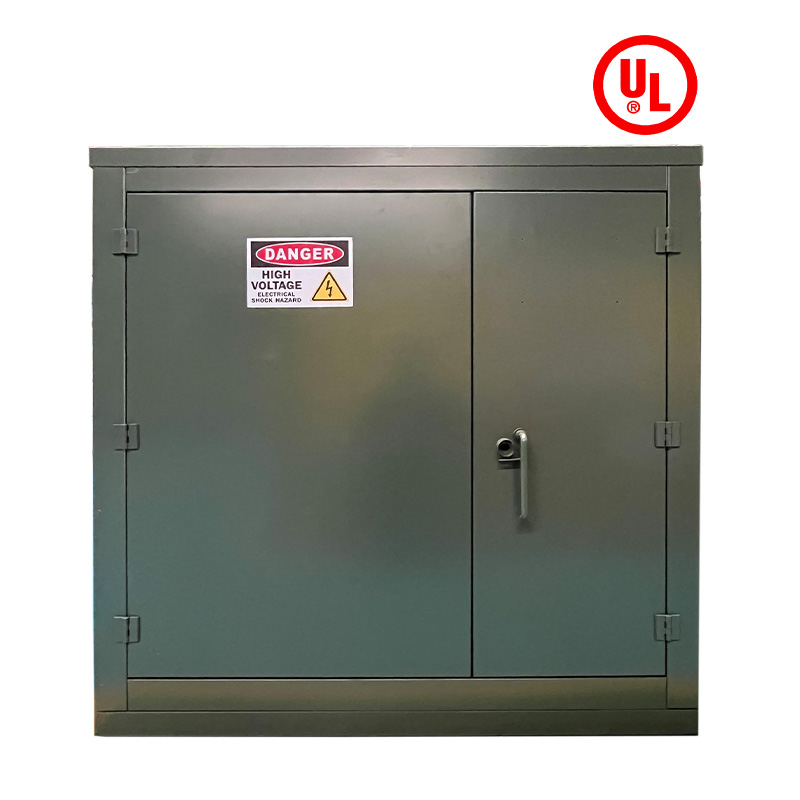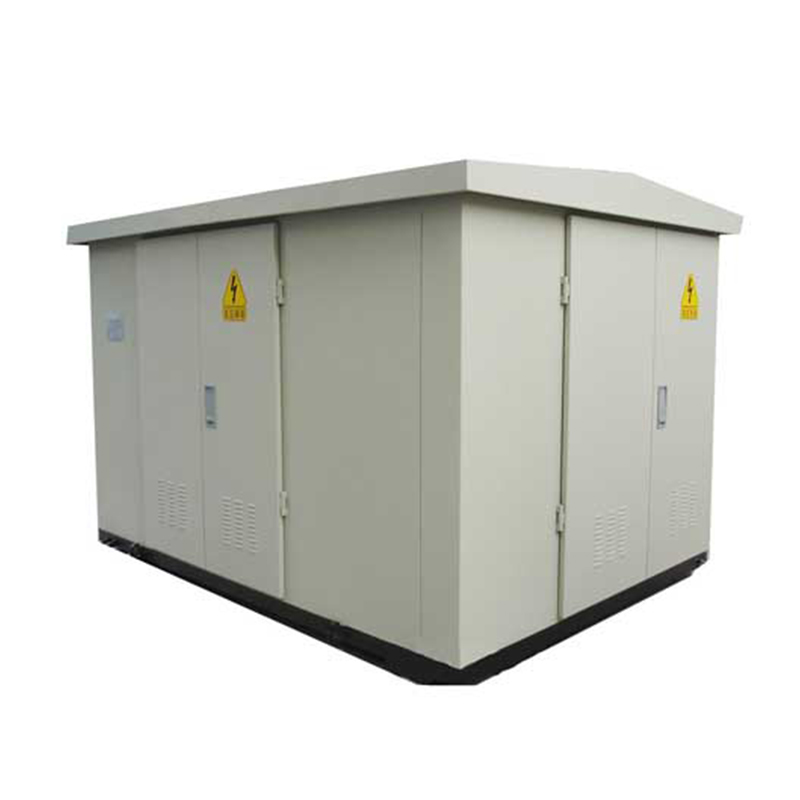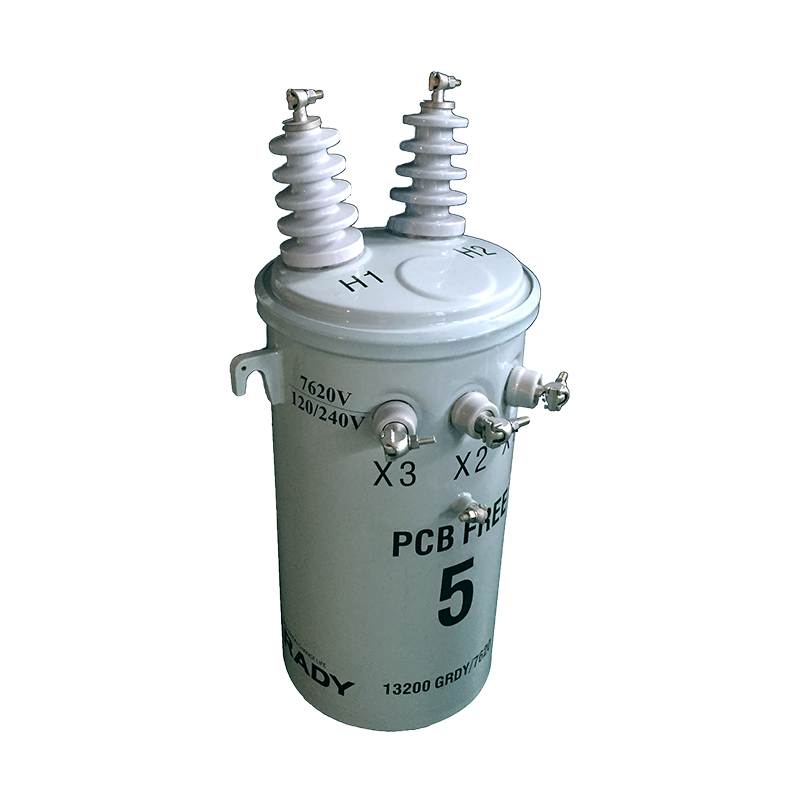Judgment Standards and Oil Change Process for Power Transformer Oil Deterioration
Acid Value: The acid value is the mass of potassium hydroxide (in mg) required to neutralize the acidic substances in 1 gram of oil, and its unit is mgKOH/g. Acidic substances in transformer oil are mainly by-products of oxidation reactions, such as formic acid, acetic acid, and naphthenic acid. These acidic substances not only corrode the transformer's copper windings and iron core (forming metal soaps that accelerate oil oxidation) but also react with the insulation paper to break the cellulose chains, reducing the mechanical strength of the insulation paper. According to GB/T 7595, the acid value of transformer oil in operation should not exceed 0.1 mgKOH/g; when the acid value exceeds 0.2 mgKOH/g, it indicates that the oil has severe oxidative deterioration and needs to be treated or replaced. For example, a 220 kV transformer in a certain power grid had an acid value of 0.28 mgKOH/g detected during routine testing; further inspection found that the insulation paper had become brittle, and the transformer had to be shut down for oil change and insulation paper replacement.
Moisture Content: The moisture content refers to the mass fraction of water dissolved in the oil, usually expressed in ppm (1 ppm = 1 mg/kg). Moisture in transformer oil comes from two main sources: one is external intrusion (such as leakage of the oil tank and failure of the breathing valve's desiccant), and the other is internal release (such as the hydrolysis of insulation paper under high temperature). Moisture has a significant impact on the insulation performance of the oil; when the moisture content increases, the breakdown voltage of the oil decreases sharply, and partial discharge is prone to occur under high voltage. The allowable moisture content of transformer oil varies with the voltage level: for 500 kV transformers, the moisture content should be ≤ 15 ppm; for 220 kV transformers, it should be ≤ 25 ppm; for 110 kV transformers, it should be ≤ 35 ppm. When the moisture content exceeds the standard by more than 50%, it is necessary to consider oil change. For example, a 110 kV transformer had a moisture content of 62 ppm detected; after oil sampling and analysis, it was found that the breathing valve's desiccant had failed, and the oil was seriously damp, so an emergency oil change was carried out.
Interfacial Tension: The interfacial tension is the force per unit length at the interface between the oil and water, with the unit of mN/m. It reflects the ability of the oil to resist the adsorption of polar substances (such as water and acidic substances). During the oxidation process of transformer oil, polar oxidation by-products are generated, which reduce the interfacial tension of the oil. A low interfacial tension means that the oil is easy to emulsify with water, and the insulation performance and heat dissipation performance of the oil will be significantly reduced. According to IEC 60296, the interfacial tension of transformer oil at 25°C should be ≥ 35 mN/m; when the interfacial tension is less than 25 mN/m, it indicates that the oil has been severely oxidized and needs to be replaced. For example, a 35 kV transformer had an interfacial tension of 21 mN/m detected; during the oil change process, a large amount of black sludge was found at the bottom of the oil tank, which was the product of the combination of polar oxidation by-products and solid particles.
Sludge Content: Sludge is a solid or semi-solid substance formed by the aggregation of oxidation by-products, metal soaps, and solid particles in transformer oil. Sludge has poor thermal conductivity and insulation performance; when it adheres to the surface of the radiator, it will reduce the heat dissipation efficiency of the transformer, leading to an increase in the operating temperature of the transformer. When it adheres to the surface of the windings, it will cause local overheating and even insulation breakdown. The sludge content of transformer oil in operation should be ≤ 0.02% (mass fraction); when the sludge content exceeds 0.05%, it is necessary to change the oil. The detection of sludge content is usually carried out by centrifugation: take a certain amount of oil sample, centrifuge it at a speed of 3000 r/min for 30 minutes, dry the sediment, and weigh it to calculate the sludge content.
Kinematic Viscosity: Kinematic viscosity is the ratio of the dynamic viscosity of the oil to its density at a certain temperature, with the unit of mm²/s. It reflects the fluidity of the oil; a high kinematic viscosity means that the oil has poor fluidity, which will reduce the heat dissipation efficiency of the transformer. The kinematic viscosity of transformer oil at 40°C should be ≤ 12 mm²/s; when the kinematic viscosity exceeds 15 mm²/s, it indicates that the oil has been severely aged (the macromolecular polymers formed by oxidation increase the viscosity of the oil) and needs to be replaced. For example, a 10 kV distribution transformer had a kinematic viscosity of 16.8 mm²/s detected at 40°C; after disassembly, it was found that the radiator tubes were blocked by viscous oil, and the transformer had experienced multiple overheating faults.
Breakdown Voltage: The breakdown voltage is the maximum voltage that the oil can withstand without breakdown under a specified test condition, with the unit of kV. It is the most intuitive indicator to evaluate the insulation strength of the oil. The breakdown voltage of transformer oil is mainly affected by moisture content, solid particle content, and acidic substance content. The test of breakdown voltage is carried out in accordance with IEC 60156: two spherical electrodes with a diameter of 25 mm are immersed in the oil sample, the distance between the electrodes is 2.5 mm, and the voltage is increased at a rate of 2 kV/s until the oil breaks down; the average value of 5 test results is taken as the breakdown voltage of the oil sample. The allowable breakdown voltage of transformer oil varies with the voltage level: for 500 kV transformers, the breakdown voltage should be ≥ 60 kV; for 220 kV transformers, it should be ≥ 50 kV; for 110 kV transformers, it should be ≥ 40 kV; for 10 kV transformers, it should be ≥ 30 kV. When the breakdown voltage is lower than the standard value by more than 20%, it is necessary to consider oil change. For example, a 220 kV transformer had a breakdown voltage of 38 kV detected; further testing found that the moisture content of the oil was 42 ppm, and the oil was seriously damp, so oil change treatment was carried out immediately.
Volume Resistivity: Volume resistivity is the resistance of a unit volume of oil, with the unit of Ω·m. It reflects the ability of the oil to resist the flow of leakage current. A low volume resistivity means that the oil has a large leakage current, which will cause local overheating of the transformer and accelerate the aging of the insulation. The volume resistivity of transformer oil at 90°C should be ≥ 1×10¹² Ω·m; when the volume resistivity is less than 1×10¹¹ Ω·m, it indicates that the oil has been severely contaminated by conductive substances (such as metal ions and acidic substances) and needs to be replaced. The test of volume resistivity is carried out using a high-resistance meter: the oil sample is heated to 90°C, and the resistance between two parallel electrodes immersed in the oil is measured, then the volume resistivity is calculated according to the electrode area and the distance between the electrodes.
Dielectric Loss Tangent (tanδ): Dielectric loss tangent is the ratio of the dielectric loss current to the capacitive current of the oil under alternating current, which reflects the energy loss of the oil in the alternating electric field. A high tanδ means that the oil has a large dielectric loss, which will cause the temperature of the transformer to rise and accelerate the aging of the oil and insulation paper. The tanδ of transformer oil at 90°C should be ≤ 0.005; when tanδ exceeds 0.01, it indicates that the oil has been severely oxidized or contaminated and needs to be treated or replaced. The test of tanδ is carried out using a dielectric loss tester: the oil sample is heated to 90°C, and the tanδ value is measured under a voltage of 1 kV. For example, a 500 kV transformer had a tanδ of 0.012 detected at 90°C; after oil sampling and analysis, it was found that the acid value of the oil was 0.18 mgKOH/g, and the oil had severe oxidative deterioration, so oil change and insulation treatment were carried out.
Hydrogen (H₂): Hydrogen is mainly generated by the electrolysis of water in the oil (under the action of high voltage) and the aging of insulation paper (the hydrolysis of cellulose produces H₂). The normal content of H₂ in transformer oil is ≤ 100 μL/L; when the H₂ content exceeds 200 μL/L, it may indicate that there is partial discharge in the transformer or the insulation paper is aging. For example, a 220 kV transformer had an H₂ content of 350 μL/L detected; further inspection found that there was a small amount of partial discharge at the lead connection of the winding, and the oil was slightly damp.
Methane (CH₄) and Ethane (C₂H₆): Methane and ethane are mainly generated by the thermal decomposition of oil molecules at low temperatures (150–300°C). The normal content of CH₄ in transformer oil is ≤ 100 μL/L, and the normal content of C₂H₆ is ≤ 50 μL/L; when the total content of CH₄ and C₂H₆ exceeds 200 μL/L, it may indicate that there is local low-temperature overheating in the transformer (such as poor contact of the tap-changer).
Ethylene (C₂H₄): Ethylene is generated by the thermal decomposition of oil molecules at medium temperatures (300–500°C). The normal content of C₂H₄ in transformer oil is ≤ 150 μL/L; when the C₂H₄ content exceeds 300 μL/L, it may indicate that there is local medium-temperature overheating in the transformer (such as overheating of the iron core due to magnetic flux leakage).
Acetylene (C₂H₂): Acetylene is generated by the thermal decomposition of oil molecules at high temperatures (> 800°C) or arcing. The normal content of C₂H₂ in transformer oil is ≤ 5 μL/L; when the C₂H₂ content exceeds 10 μL/L, it is a serious warning signal, indicating that there is arcing in the transformer (such as arcing of the tap-changer or insulation breakdown of the winding). For example, a 110 kV transformer had a C₂H₂ content of 45 μL/L detected; emergency shutdown inspection found that the tap-changer had severe arcing, and the oil had been contaminated by carbon deposits, so the tap-changer was replaced and the oil was changed.
Carbon Monoxide (CO) and Carbon Dioxide (CO₂): Carbon monoxide and carbon dioxide are mainly generated by the thermal decomposition of insulation paper (cellulose). The normal content of CO in transformer oil is ≤ 300 μL/L, and the normal content of CO₂ is ≤ 1000 μL/L; when the CO₂/CO ratio exceeds 10, it indicates that the insulation paper is aging normally; when the CO₂/CO ratio is less than 5, it may indicate that the insulation paper is overheating (such as local overheating of the winding causing the insulation paper to burn).
Relatenews
- Architecture Design of IoT-Based Monitoring System for Power Transformers 2025-09-05 15:27:00
- Judgment Standards and Oil Change Process for Power Transformer Oil Deterioration 2025-09-05 15:23:00
- Design and Mechanical Strength Verification of Short-Circuit Withstand Capability for Power Transformers 2025-09-05 15:19:00
- The Role of Power Transformers in Voltage Regulation within Power Systems 2025-08-25 08:14:00
- Environmental Regulations and Technical Measures for Power Transformer Noise Control 2025-08-25 08:12:00
- The Application of Big Data Analytics in Power Transformer Fault Prediction 2025-08-25 08:11:00
- Impact of Distributed Generation Integration on Load Characteristics of Power Transformers 2025-08-16 09:43:00
- Conditions and Protection Coordination Strategies for Parallel Operation of Power Transformers 2025-08-16 09:42:00





